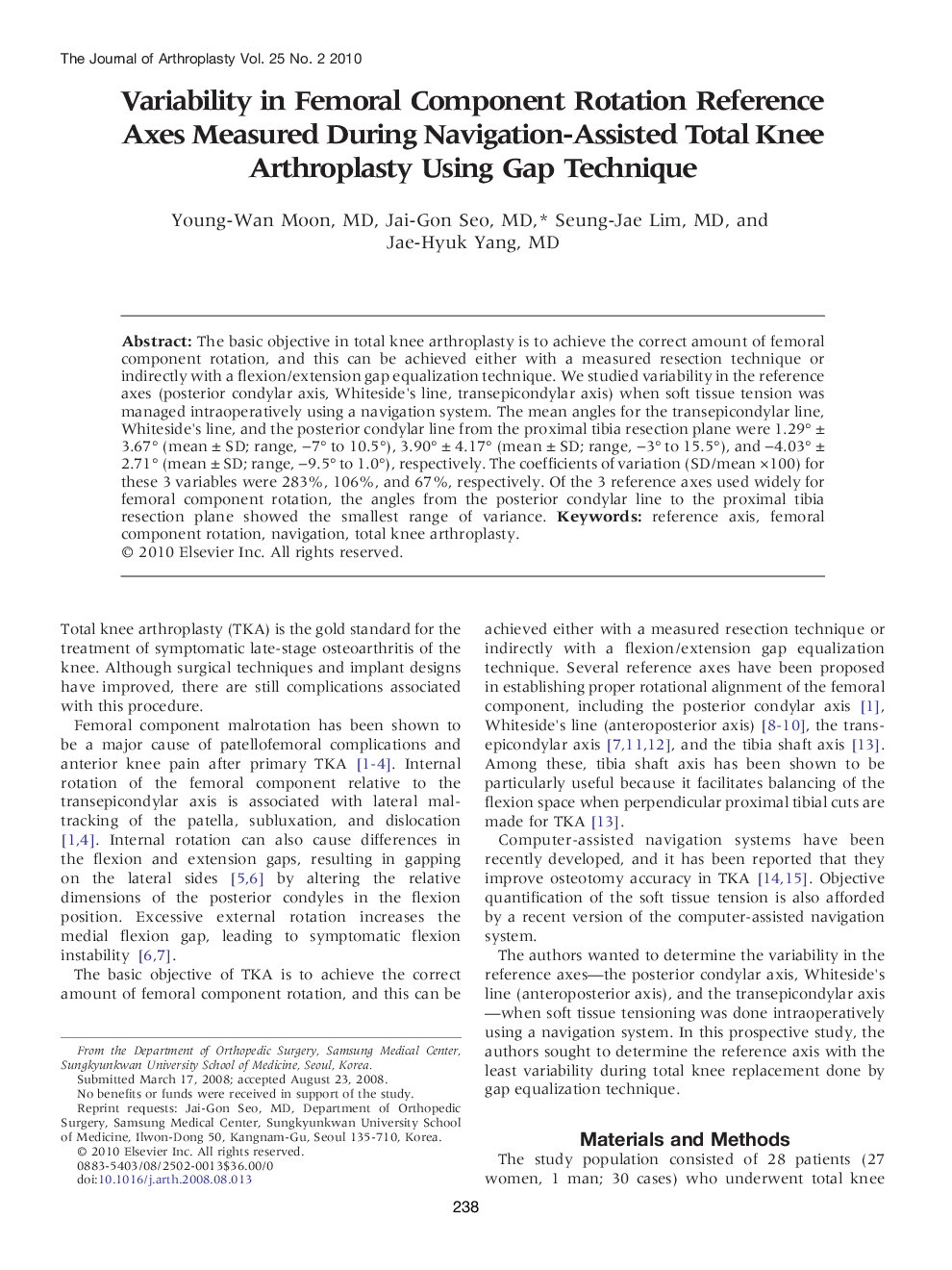| Article ID | Journal | Published Year | Pages | File Type |
|---|---|---|---|---|
| 4061490 | The Journal of Arthroplasty | 2010 | 6 Pages |
The basic objective in total knee arthroplasty is to achieve the correct amount of femoral component rotation, and this can be achieved either with a measured resection technique or indirectly with a flexion/extension gap equalization technique. We studied variability in the reference axes (posterior condylar axis, Whiteside's line, transepicondylar axis) when soft tissue tension was managed intraoperatively using a navigation system. The mean angles for the transepicondylar line, Whiteside's line, and the posterior condylar line from the proximal tibia resection plane were 1.29° ± 3.67° (mean ± SD; range, −7° to 10.5°), 3.90° ± 4.17° (mean ± SD; range, −3° to 15.5°), and −4.03° ± 2.71° (mean ± SD; range, −9.5° to 1.0°), respectively. The coefficients of variation (SD/mean ×100) for these 3 variables were 283%, 106%, and 67%, respectively. Of the 3 reference axes used widely for femoral component rotation, the angles from the posterior condylar line to the proximal tibia resection plane showed the smallest range of variance.
